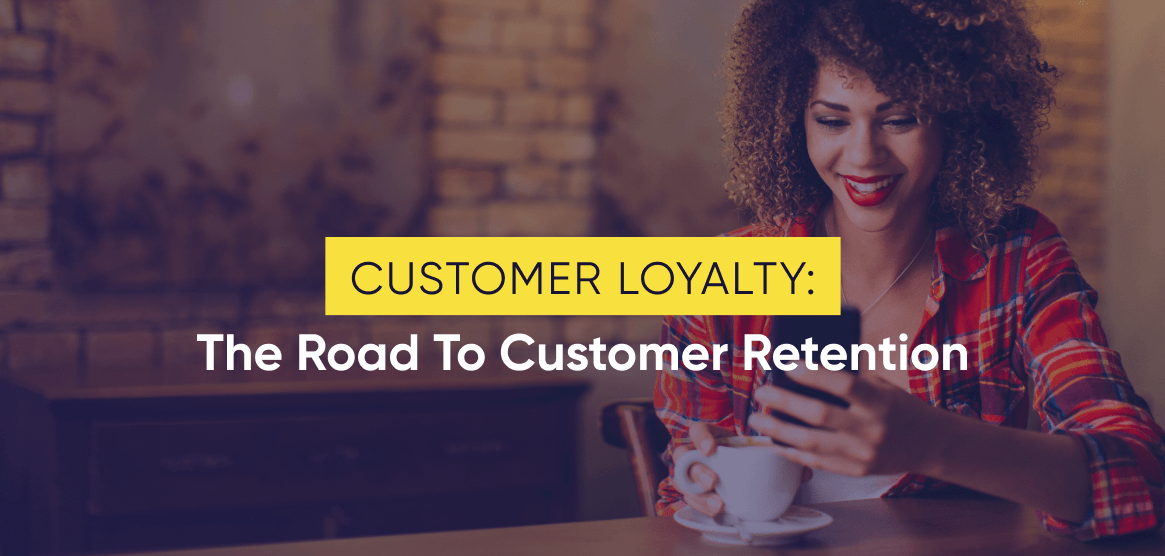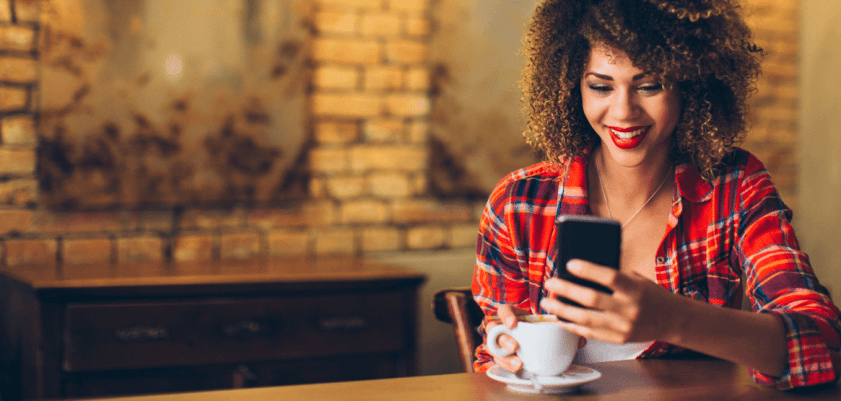“Customer loyalty” is one of those industry terms that needs no introduction. We all know what it means, we’ve heard it a thousand times in CRM meetings and seen it among the company KPIs. It’s the yellow-brick road that leads to customer retention. Yet occasionally it’s worth taking a step back and re-evaluating the things we take for granted. How does customer loyalty really work, and how can it be inspired? Is it based on rational or emotional decisions? Is it simply habit-building? And how does a loyalty program tie into it? Well, keep reading to find out!
If you’re interested in an in-depth look at how customer loyalty is reflected in the current loyalty program landscape, make sure to check out our Global Customer Loyalty Report.
The Definition of Customer Loyalty – A Mutually Beneficial Agreement
When talking about loyalty, it is crucial to differentiate between personal loyalty (between friends and family members) and customer loyalty (between an individual and a business). The two have a few things in common, for example, they’re both earned by actions and developed over time. Still, there are several reasons as to why they’re fundamentally different. The most important differences are the nature of how loyalty is earned, and the actions by which it manifests.
In our personal lives, forging bonds has no financial connotation. You don’t earn points for giving advice to your friends, or helping out a family member: it is purely out of genuine connection and kindness. In a commercial/business setting, however, both earning and acting on loyalty are tied to a (transactional or non-transactional) benefit-based system — the best example of this is a loyalty program.
Customer loyalty is a customer’s recurring behavior, that has a commercial benefit for your brand. It includes repeat purchases, preference over competitors, brand advocacy, social engagement, and loyalty program engagement. Customer loyalty is earned through outstanding customer service, high product quality, added benefits, and loyalty program systems.
5 Reasons Why Customer Loyalty Is Important – Start Taking Notes
Customer loyalty manifests in quite a few beneficial ways for a brand. Here are some highlights as to how it can improve your business:
- Keeping a loyal customer costs far less: As we know, it is much less financially straining to regain a customer than to acquire a new one. In fact, successfully bringing in a new customer costs as much as 7x more than retaining an existing customer.
- A first good impression will lead to return visits: It is much easier to convince someone who once purchased from you (and walked away with a great impression) to come back, than to convince someone who has never heard of or tried your products. Return visits are more likely from customers who are already familiar with your experience, quality, and value.
- You will always be their first choice: A happy and satisfied customer who enjoys their loyalty benefits will automatically seek out your products (in-store or online) when they require refills or similar items, so there is far less risk of losing sales to your competitors.
- Long, profitable years together: A nurtured loyal customer generates much higher revenue for a longer period than a shopper with no loyalties or incentives to purchase again.
- Good PR is the Best PR: Organic recommendations have enormous swaying power in today’s distrustful society. Happy customers are prone to relay positive experiences to their social circles and online communities, bringing in more potential buyers and revenue for the company.
The Difference Between Surface-Level and Real Customer Loyalty
In the world of customer retention, it’s important to know that customers who are easy to attract may also be easy to lose. In the current financially unstable environment, customers and companies alike think twice about what they are spending on.
To ensure high ROI, companies need to look for long-term returns, aka true customer loyalty, instead of encouraging short-term, one-time buy-in. Trying to “buy” loyalty with price cuts and coupons essentially teaches consumers to be dependent on special deals. The moment the benefits stop or a competitor offers better deals, those customers will leave you in the dust. You are essentially just buying a temporary audience, which won’t drive your KPIs in the long run.
Exclusively targeting price-sensitive shoppers will never result in a truly loyal audience. This is precisely why systems like loyalty programs are more beneficial: they gradually build trust and shape customer behavior.
How Do You Identify a Loyal Customer? – Actions Speak Loud and Clear
The requirements for customer loyalty change for every business. After all, a loyal customer’s purchase frequency for a luxury fashion brand differs completely from that of a fast food chain. So, instead of relying on a magic formula, think about what actions you want your loyal customers to take. There are actions that need to be analyzed from both a financial and emotional standpoint:
Financial dedication:
- Spending with the one and only: Your loyal customers purchase exclusively (or at least overwhelmingly) from you in the product categories you offer.
- Keep coming back for more: Purchase frequency is just as important as average basket value. The more shoppers repeatedly shop with you, the more connected, dedicated, and loyal they are.
- Go above and beyond: In a transactional sense, your most loyal customers are those willing to stay with you through (rational) price increases — and opt into your premium offerings as well.
Emotional commitment:
- They really like you: When customers take action, like leaving great reviews and social recommendations, it showcases genuine love for your brand.
- Forgiveness is a virtue: Shoppers who are truly dedicated to your brand will allow you more leeway for making mistakes than others. (On the condition that you show that you’re growing and learning from their feedback.)
- It all comes down to trust: Your most loyal customers will be more likely to trust you with their data, will be more willing to fill out surveys and complete quizzes, and will provide more zero-party information in general.
The Evolution of Customer Loyalty – Stairway to Loyalty Heaven
1. First-Time Delight
This segment represents the group of customers, who are delighted with the first purchase experience. They were impressed by the ease of access, product range, variety in color/size, in-store assistance/online chatbot, multiple payment methods, shipping, overall cost, timely arrival, and follow-up care from the company. Thanks to the positive contact, they are inclined to seek out the company again in the future.
2. Going back for Seconds
After a first positive experience that exceeds expectations, satisfied customers will remember your company. Next time, instead of a generic search, they will go straight to your website or store to search for a similar product. If they are happy with the results again, they will be more and more inclined to do more than just buy your products. They may, for example, download your smartphone app, subscribe to your newsletter, or register for your loyalty program.
3. Engaging With the Loyalty Program
This is where you take things to a more organized level. Now that you hold the customer’s attention, it’s time to start building that ever-important emotional connection. Through habit building via a loyalty program. This could happen by involving your customers in a reward program, engaging them in fun games and activities in,- and outside of the buying cycle. It’s important to start setting goals and milestones they can achieve (granting a sense of fulfillment upon completion) because this will continue to power the positive experience and keep them coming back for more.
4. Becoming an Ambassador
At this point, your customer has made repeat purchases, they’re signed into your loyalty program, they are engaged and connected, and they are happy with their experience. And what do happy people do? They spread the word about your business, effectively becoming your advocates and brand ambassadors. To achieve this, you need to ensure a seamless and satisfying experience from the moment they come across your products, through the buying process, all the way to a fresh and engaging loyalty program.
Where the Loyalty Program Vision Starts – Everything Is Possible With the Right Ingredients
Building customer loyalty is like fine dining. A lot of responsibly sourced, top-of-the-line ingredients are combined in just the right way, at the right time, and in the right format. Excellent service and high product quality represent the basics; a clever loyalty program with a well-thought-out reward system embodies the artful flavoring that keeps customers coming back.
In short, a loyalty program is a marketing tool that helps businesses shape customer behavior and establishes long-term engagement that prevents them from switching to the competition. This is done through monetary rewards, personalized content, special privileges, and lifestyle-driven experiences.
How to Build Customer Loyalty – Skyrocketing Loyalty With Rational and Emotional Rewards
In the past, loyalty programs were all about coupons, discounts, and stamp collection. However, modern loyalty programs have gone beyond that because organizations have realized that loyalty cannot be bought with vouchers. That’s why next-gen loyalty programs also include emotional features that make the experience more personalized and memorable.
Rational loyalty program elements include:
- Earn & burn point logic
- Coupons & vouchers
- Cashback offers
- Members-only discounts
- Free shipping as a perk
- Instant gratification, like welcome rewards
- Earning opportunities at partners
- Cross-brand benefits
Emotional loyalty program elements include:
- Personalized product recommendations
- Gamification, like prize wheels or prize draws
- Badges and challenges
- Experiential benefits, such as invites to an anniversary party
- Branded merch or items signed by an influencer
- Privileges, like access to VIP customer service
- Surprise & delight email campaigns
- Opportunities to earn rewards via non-transactional means, e.g., writing product reviews, bringing back used clothes, or living an active life
Remember, a smart loyalty program uses both types of elements at the same. Although rational incentives motivate people to become program members, the emotional elements transform them into loyal customers.
Customer Loyalty Is Invaluable – Make Sure to Treat It That Way
Ensuring your customers’ happiness goes a long way towards enabling a lasting connection and true loyalty. Trust and commitment aren’t freely given — they need to be earned. But they can just as easily be lost! Make sure that you’re always providing value for your customers through your products, the buying experience, and your loyalty program.
Establishing customer loyalty through habit building via loyalty program engagement will provide longevity and vitality to your business. And that’s the most valuable currency you can have.
To learn more about loyalty programs and explore creative and engaging features, please make sure to book a demo or include Antavo in your RFP process.
If you haven’t already, make sure to also download our Global Customer Loyalty Report for the latest insights and expert predictions.
Zsuzsa is the Chief Strategy Officer and Co-founder of Antavo. She has experienced Antavo grow from a startup into a market-leading, global scaleup for loyalty program technology, serving global brands and retailers. She was named Personality of the Year at the 2024 International Loyalty Awards, and listed by Forbes as one of Europe’s top 100 female founders in tech, Zsuzsa is a former journalist recognized by the European Commission.

